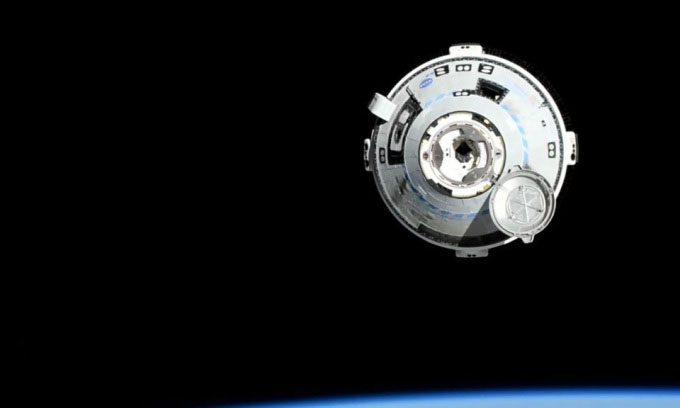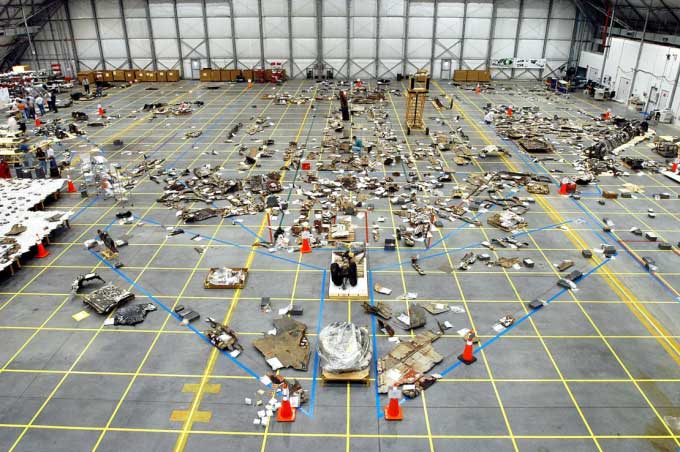Two deadly incidents involving the Challenger and Columbia space shuttles prompt NASA to carefully consider astronaut safety.
NASA astronauts Suni Williams and Butch Wilmore flew to the International Space Station (ISS) aboard Boeing’s Starliner on June 5, planning to stay on the station for about a week. However, they now face a much longer stay in space, with plans to return to Earth no earlier than February 2025.

Boeing’s Starliner approaches the International Space Station (ISS) for docking in early June. (Image: NASA TV)
The flight on June 5 marked Starliner’s first crewed mission to orbit. Issues related to the spacecraft’s propulsion system have repeatedly delayed the return of Williams and Wilmore. Ultimately, during a press conference on August 24, NASA announced that the two astronauts would return to Earth aboard SpaceX’s Dragon spacecraft. This decision was made based on lessons learned from the two NASA shuttle disasters: Challenger and Columbia.
“This affected the decision of this team and all those involved in the Flight Test Readiness Review. Everyone is working hard to change the culture that led to the loss of Challenger and then Columbia, where clear mistakes were not addressed,” said Bill Nelson, NASA Administrator.
In January 1986, the Challenger shuttle exploded 73 seconds after launch, killing all seven crew members. The accident was attributed to unusually cold temperatures at Cape Canaveral, which caused some of the materials used to seal the rocket to lose their flexibility. “Hot gases leaked out, igniting the propellant tank and causing a massive explosion,” said Jim Hermanson, a professor of aerospace engineering at the University of Washington.
Another tragic incident occurred in February 2003 when the Columbia shuttle disintegrated during re-entry to Earth, killing all seven crew members. Before this disaster, the re-entry phases (reentry, descent, and landing) were considered “gentle,” especially when compared to the extremely violent launch phase.
NASA engineers were aware that a piece of foam – used to insulate the shuttle’s large orange fuel tank – had detached during the launch on January 16, 2003, striking Columbia. At the time, NASA believed that this lightweight insulation material would not cause significant damage. However, this was a misjudgment. Subsequent investigations revealed that the foam had struck the left wing of Columbia during launch, damaging the spacecraft’s thermal protection system.

Debris from the Columbia shuttle scattered on the floor of the RLV storage area at Kennedy Space Center, Florida, May 2003. (Image: NASA).
Nelson shared that before the Challenger launch, several engineers had expressed concerns about the shuttle’s components and launching in extremely cold weather, but their concerns were overlooked. With Columbia, some NASA experts recommended photographing the damaged wing while in orbit, but ultimately, the re-entry proceeded without any further inspections, leading to the tragedy.
NASA Deputy Administrator Jim Free noted that further research is needed to understand the issues with Starliner’s propulsion system. “There are still uncertainties in our understanding of the physical processes occurring in the propulsion systems. We still have work to do,” Free stated.
SpaceX’s Crew Dragon 9 will be adjusted to accommodate the Starliner astronauts, allowing them to return home early next year. In September, the spacecraft is expected to launch with only two astronauts instead of the usual four. Also in September, NASA and Boeing will collaborate to bring an empty Starliner back to Earth, aiming for a landing at the White Sands Spaceport in New Mexico, USA.





















































